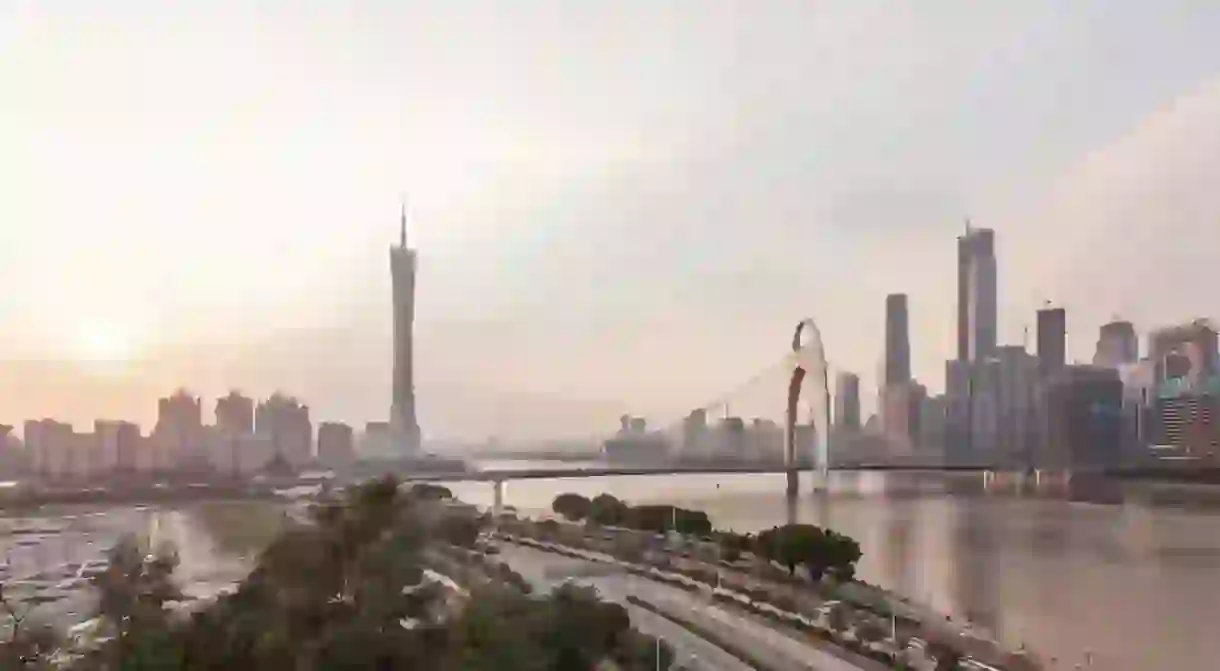What is China’s Greater Bay Area Plan?

The Greater Bay Area is the Chinese government’s grand plan to integrate Hong Kong, Macau and nine southern mainland cities into one huge megacity – the largest the world has seen – in order to become a leading hub for innovation and economic growth.
As bay areas go, China’s Greater Bay Area has ambitions to become a world leader. The Chinese government is in the process of integrating the special administrative regions of Hong Kong and Macau with nine mainland Chinese cities: Guangzhou, Shenzhen, Zhuhai, Foshan, Zhongshan, Dongguan, Huizhou, Jiangmen and Zhaoqing. The vision is to create a united hub for economic growth, innovation, culture and living.

The gigantic city cluster will encompass 68 million people and 56,000 sq km (21,622 sq mi), with a combined economy of £1.14 trillion, and is set to become a powerhouse of innovation and economic growth. By 2030, the Greater Bay Area is expected to play a leading role in advanced manufacturing, innovation, shipping, trade and finance with the largest economy among bay areas globally, eclipsing the San Francisco Bay Area, Greater New York and the Greater Tokyo Area.

The idea to create the Greater Bay Area was first raised in a 2009 research report between the local governments of Hong Kong, Macau and China’s Guangdong Province. The report proposed the coordinated development of a city cluster that would foster economic integration and better meld people, goods and sectors across the region.
Since then, an agreement on the development of the Greater Bay Area was signed on 1 July 2017, the 20th anniversary of Hong Kong’s return to China. Under the agreement, Hong Kong, Macau and the nine cities of Guangdong will improve collaborative mechanisms and facilitate cooperation to build a world-class bay area.
A bridge to better integration
For the first time ever, the semi-autonomous cities of Hong Kong and Macau will be adjoined by land to a mainland Chinese city as part of the Hong Kong-Zhuhai-Macau Bridge, which at 36km (22mi) and at a cost of nearly £16 billion, will be the world’s longest sea bridge when it opens later this year.

The mega bridge is part of plans to further integrate the cities of the Greater Bay Area, especially the former European colonies of Hong Kong and Macau, binding them closer to mainland China in what is one of the country’s biggest engineering projects ever undertaken.
Alongside the bridge, a new £8.35-billion high-speed rail link – the Guangzhou-Shenzhen-Hong Kong Express Rail Link – opened to the public on 23 September 2018. It’s the first high-speed rail link connecting Hong Kong to the mainland with bullet trains that reach speeds of 200kph (124mph). Up to 80,000 passengers are expected to use the rail link daily, as the project seeks to deepen integration of Hong Kong with mainland China.
Roadblocks
Despite ongoing “integration” plans, many Hongkongers remain deeply divided about the Greater Bay Area plan. Many feel multi-billion dollar infrastructural projects like the mega bridge and rail link threaten the city’s cherished freedoms, and they fear the city could lose its unique identity as China’s embrace grows.

Under the “one country, two systems” arrangement, Hong Kong, a former British colony, was granted a high degree of autonomy until 2047 and keeps its own legal and political system. However, the new high-speed rail station in Hong Kong, for example, contains an area where all passengers going to the mainland will be pre-screened by Chinese immigration officials. Some say this is a direct breach of the “one country, two systems” arrangement, as it allows Chinese law to be enforced on Hong Kong soil for the first time, thus undermining the city’s autonomy.
Meanwhile, others are more supportive of the plans, believing the Greater Bay Area will do wonders to enhance shared innovation and economic growth opportunities.
The next Silicon Valley?
The grand plan behind the Greater Bay Area is is to utilise the region’s already strong finance, manufacturing and technology industries to be able to turn it into a world-leading economic and innovation hub. Some believe the Greater Bay Area will even outpace its rival, Silicon Valley, as the most important global centre for scientific and technological innovation.
Whether the plan will succeed in its grand ambitions remains to be seen. However, it certainly boasts potential. Hong Kong is a major financial centre, and Shenzhen is the country’s leading technology centre with a booming start-up scene and tech giants like drone-maker DJI. Meanwhile, Macau is the world’s most lucrative gambling centre, and Guangdong, which is home to nine of the mainland cities that form the Greater Bay Area plan, is the workshop of the world, exporting £510 billion in goods last year, more than any other province in China.
It’s also hoped the Greater Bay Area will help to cultivate a higher quality and more affordable living circle for the region’s population of 68 million. While Hong Kong’s property prices are the highest in the world, it’s been suggested that major transport infrastructure will enable Hongkongers to relocate to other cities in the Greater Bay Area, where property is cheaper, and commute to Hong Kong in the future. If the plan can capitalise on the respective strengths of each city, together it could be a recipe for booming cooperation and growth.
A master development plan for the Greater Bay Area initiative was meant to be released earlier this year but has been delayed due to the ongoing trade war with the United States. So, at least for now, only time will tell if the plan will deliver on its great potential.













